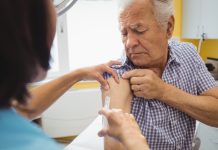NICE has endorsed idebenone (Raxone) on the NHS to treat Leber’s hereditary optic neuropathy in individuals aged 12 and over, offering hope to around 250 people
Hundreds of adolescents and adults across England could soon regain partial vision after NICE recommended idebenone (marketed as Raxone) as the first licensed medication for Leber’s hereditary optic neuropathy (LHON). Approved for those aged 12 and up, the treatment, made by Chiesi, is expected to be available on the NHS within three months via a patient access scheme. This mitochondrial genetic disorder typically strikes young people with rapid vision loss, so this guidance brings a rare ray of hope.
What is Leber hereditary optic neuropathy?
Leber hereditary optic neuropathy (LHON) affects around 2,500 people in the United Kingdom. It causes progressive loss of vision in both eyes, and within weeks of onset, an affected individual reaches the legal threshold to be considered severely sight-impaired. The condition typically affects young men, and the peak age of onset is between 15 and 35 years.
The loss of retinal ganglion cells causes the condition, which are specialised nerve cells in the innermost layer of the retina. The projections, or ‘axons’, from these cells converge to form the optic nerve, the cable that transmits visual information from the eye to the brain. Once these retinal ganglion cells are lost, the damage becomes irreversible. Leber hereditary optic neuropathy is primarily caused by genetic defects within the mitochondrial genome, which is transmitted down the maternal line.
Patients in England will now benefit from idebenone
Idebenone is the first treatment for Leber hereditary optic neuropathy recommended by NICE for use on the NHS in England. The drug works by restoring cells’ ability to produce energy, allowing inactive eye cells to function again and potentially improve eyesight. The drug was already licensed for limited use by patients in Scotland, Wales, and Northern Ireland. Patients in England can access this treatment through a patient access scheme, which is expected to make it affordable and accessible within three months.
The LEROS trial, led by Professor Patrick Chinnery and Professor Patrick Yu-Wai-Man, assessed the efficacy and safety of idebenone treatment in patients with LHON up to five years after symptom onset and over a treatment period of 24 months. They found that the drug can help stabilise vision in some patients and, in some instances, may even lead to significant improvement when treatment is provided within five years of the onset of vision loss, offering a ray of hope for those affected.
Professor Yu-Wai-Man said: “LHON causes devastating visual loss, and it is a life-changing diagnosis for the affected individual and their family. England is now in line with the rest of the United Kingdom, with idebenone available through the NHS. This will come as a great relief to the LHON community in this country, bringing hope to those who have experienced significant visual loss from this mitochondrial genetic disorder.”
Around 250 people in England could be eligible for the treatment, which involves taking medication three times a day.
“This is a debilitating condition that has a hugely significant impact on people, robbing them of their independence and quality of life. The sudden change in sight can make daily activities such as reading, travelling, and recognising faces very difficult or impossible,” commented Helen Knight, Director of Medicines Evaluation at NICE.
Katie Waller, Head of Patient Programmes at The Lily Foundation, a charity that supports patients affected by mitochondrial diseases, said: “This is a huge win for the mito community and we’re proud to have been a key stakeholder throughout the process. While it isn’t a cure, this treatment offers real potential for patients to preserve or improve vision, giving them the chance to regain independence, confidence, and a better quality of life.”











